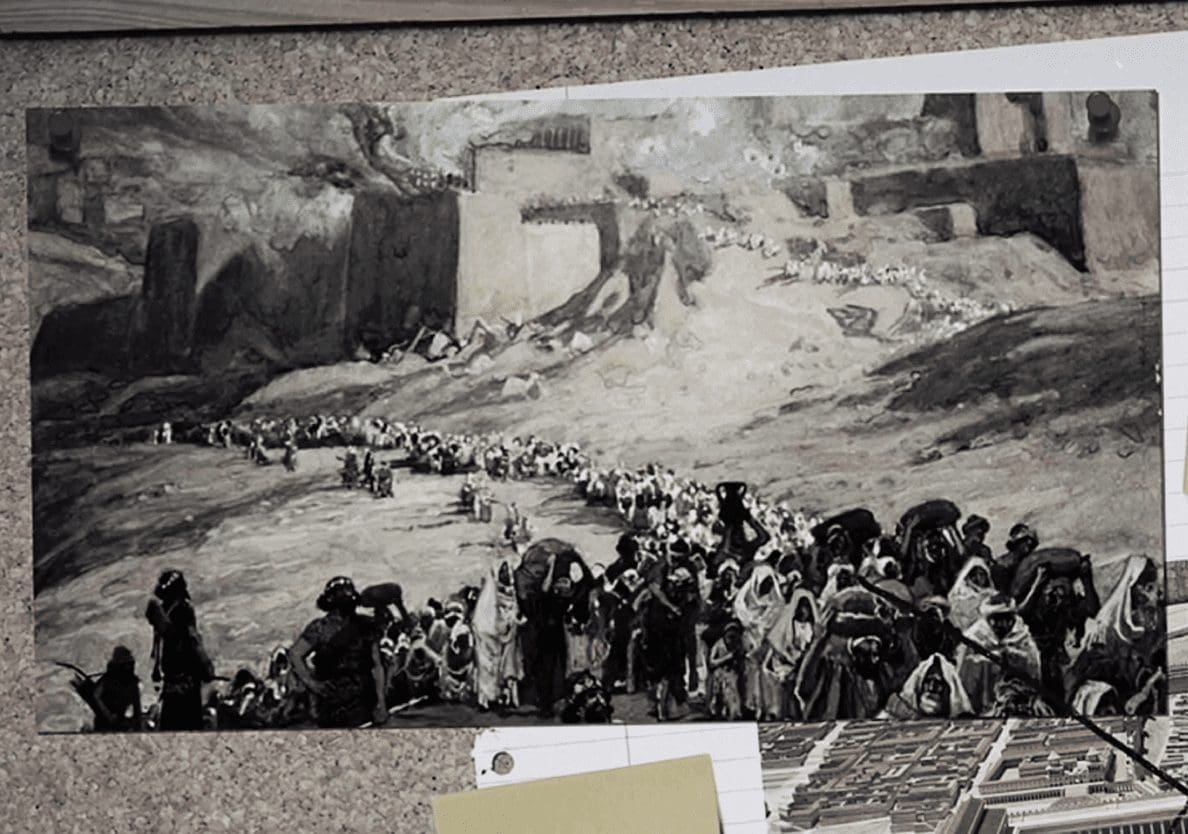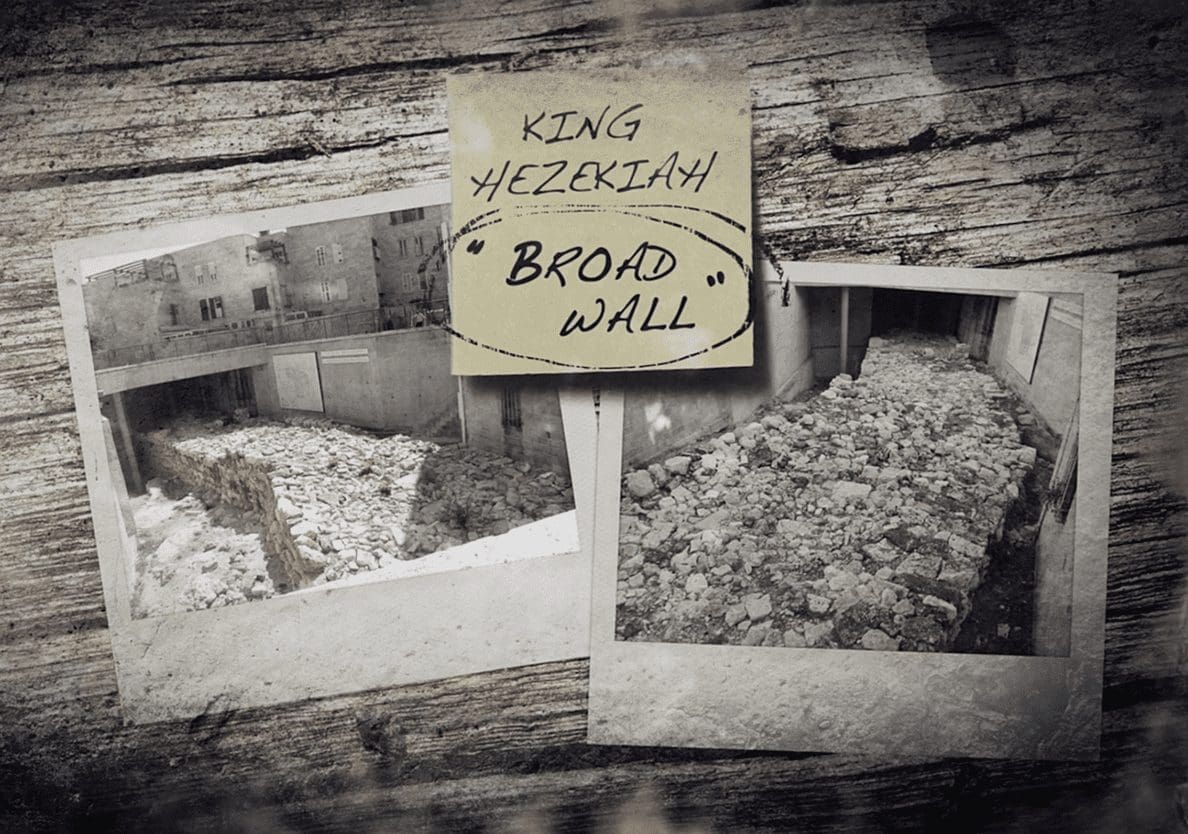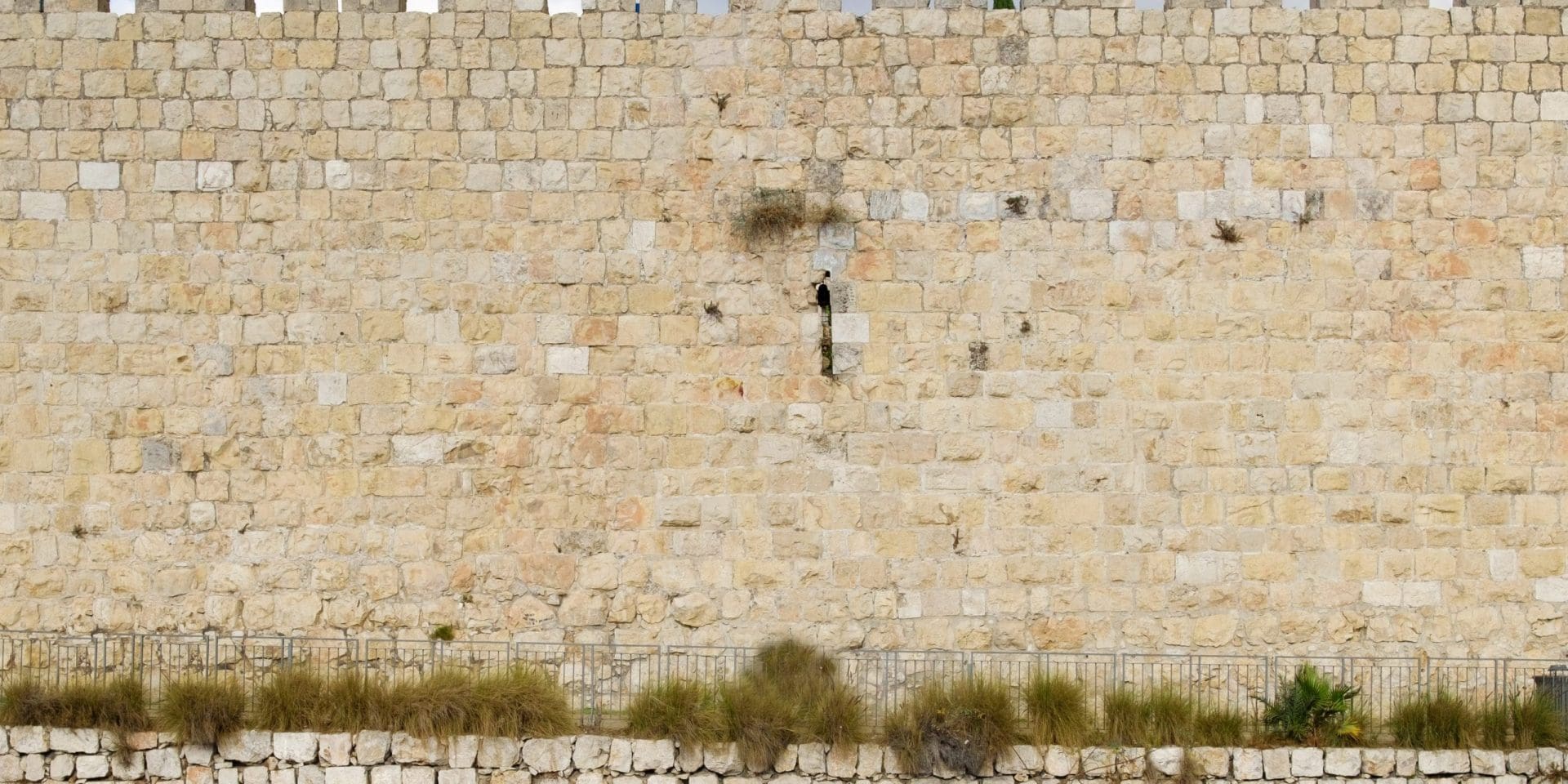The book of Nehemiah records the rebuilding of Jerusalem’s city wall in about 445BC. By this time, exiles who were taken at the time of the Babylonian conquest had already been allowed to return to their homeland, and the ones that did had already rebuilt the Temple in Jerusalem. All that was left was to rebuild the city’s walls and gates, and hopefully replenish its population.
Once Nehemiah was on the case, the Bible records the wall of Jerusalem was up in only 52 days! An impressive feat especially considering that it would’ve been at least 6.5 feet wide, spacious enough for a procession of people to triumphantly march along it to dedicate their work (Nehemiah 12:31-43).[1] The building process included different people building individual sections of the wall, which meant that these sections would have needed to be seamlessly integrated together, so the people would have had to work closely with one another.
“Though it has lasted millennia, its stones are unfinished and roughly pieced together with large gaps stuffed with smaller rocks and mortar.”
Jerusalem’s new wall had 11 gates, and several defensive towers, many built right over top of the pre-Exile ruins of the old wall; but just like the new Temple, most experts believe, based on both the Bible’s description and archaeological remains, that this new wall was not as impressive as the old one, and enclosed a much smaller area of the city.[2] Jerusalem before the Exile had grown to incorporate a large territory to the West of the original city of David. A wall, referred to as the “Broad Wall”, was built by King Hezekiah to expand the city’s defenses around this Western area. It appears however that the wall of Nehemiah left this part of the city out of the wall, it would have added a huge area of wall to build, and simply wasn’t needed at the time.


Amazingly, though Jerusalem has been rebuilt so many times since, archaeological evidence for Nehemiah’s wall has been unearthed. Several sections have been identified, including in a recent excavation (2000s) in the area believed to have held King David’s palace. During preservation efforts, archaeologist Eilat Mazar was able to excavate under and around the remains of a defensive tower and a section of Nehemiah’s wall, these excavations confirmed that they must be part of the wall that Nehemiah commissioned!
It also confirms Nehemiah’s timeline of 52 days – the wall is not well constructed, evidence of hasty work – though it has lasted millennia, its stones are unfinished and roughly pieced together with large gaps between that were stuffed with smaller rocks and mortar.[3]

Corie Bobechko is a daily co-host, speaker, and writer of Bible Discovery. She also hosts a YouTube channel that shows how history and archaeology prove the Bible. Her heart for seekers and skeptics has led her to seek truth and share it with others. Corie also has a Bachelor of Theology from Canada Christian College.
[1] “Jerusalem in the Time of Nehemiah,” Ritmeyer Leen & Kathleen, Carta Jerusalem, 2005.
[2] https://members.bib-arch.org/biblical-archaeology-review/31/4/4
Ussishkin, David. “Big City, Few People,” Biblical Archaeology Review 31.4 (2005): 27–28, 30–31, 33–35.
[3] https://members.bib-arch.org/biblical-archaeology-review/35/2/7
Mazar, Eilat. “The Wall That Nehemiah Built,” Biblical Archaeology Review 35.2 (2009): 24, 26–28, 30, 32–33.







May 1, Bible Discovery sent me 2 emails: Job: 4-7, w/e edition.
As I opened either email, they both disappered. Why, I asked?